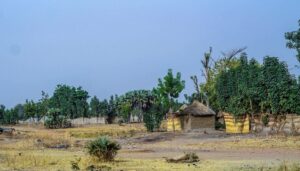
PROCEEDINGS OF THE NATIONAL ACADEMY OF SCIENCES—Archaeological wheat and cotton remains reveal sophisticated trade networks and agricultural experimentation in Medieval West Africa, according to a study. Free-threshing wheat (Triticum aestivum and Triticum durum) and old-world cottons (Gossypium arboreum and Gossypium herbaceum) were introduced to West Africa as part of Trans-Saharan trade networks. Previous research on wheat and cotton in the region has been limited to arid sites associated with the arrival of Islamic merchants. Amanda Logan and colleagues analyzed archaeological wheat and cotton remains from the major Medieval urban center of Ilé-Ifè, Nigeria, located in a humid tropical forest. Analysis of 353 charred cotton seeds and seed coat fragments revealed that fiber was probably cultivated and manufactured into cloth locally. Two directly dated cotton seeds yielded dates of around 1201–1224 CE, which is roughly contemporaneous with cotton remains from arid sites further north. The authors identified 48 well-preserved grains of free-threshing wheat at the site and dated four grains to 1294–1397 CE. Wheat was likely imported to the site, given that the humid forest environment is not suitable for local cultivation. The authors suggest that cotton cloth and wheat likely represented luxury goods in the region. According to the authors, the rapid adoption of cotton illustrates a highly developed trade in commodity crops across Africa, centuries before cotton became central to European global trade.
____________________________

Profile of deep pit where wheat was found at Oduduwa College in Ilé-Ifè, Nigeria. Gérard Chouin, Ife-Sungbo Archeological Project
____________________________
Article Source: PNAS news release.
*“Early archaeological evidence of wheat and cotton from medieval Ile-Ife, Nigeria” by Amanda L. Logan et al., PNAS, 26-Aug-2024. https://www.pnas.org/cgi/doi/10.1073/pnas.2403256121
Cover Image, Top Left: ammeelamz, Pixabay
____________________________
Advertisement

EXPLORE THE ANCIENT ETRUSCANS IN PERSON!
Experience a unique, up-close-and-personal hike among ancient hilltop towns in central Italy. You will walk the sensational countryside of the regions of Umbria and Tuscany, soaking in important sites attesting to the advanced Etruscan civilization, forerunners of the ancient Romans; imposing architectural and cultural remains of Medieval Italy; local food and drink; and perhaps best of all — spectacular scenic views! Join us in this collaborative event for the trip of a lifetime!




